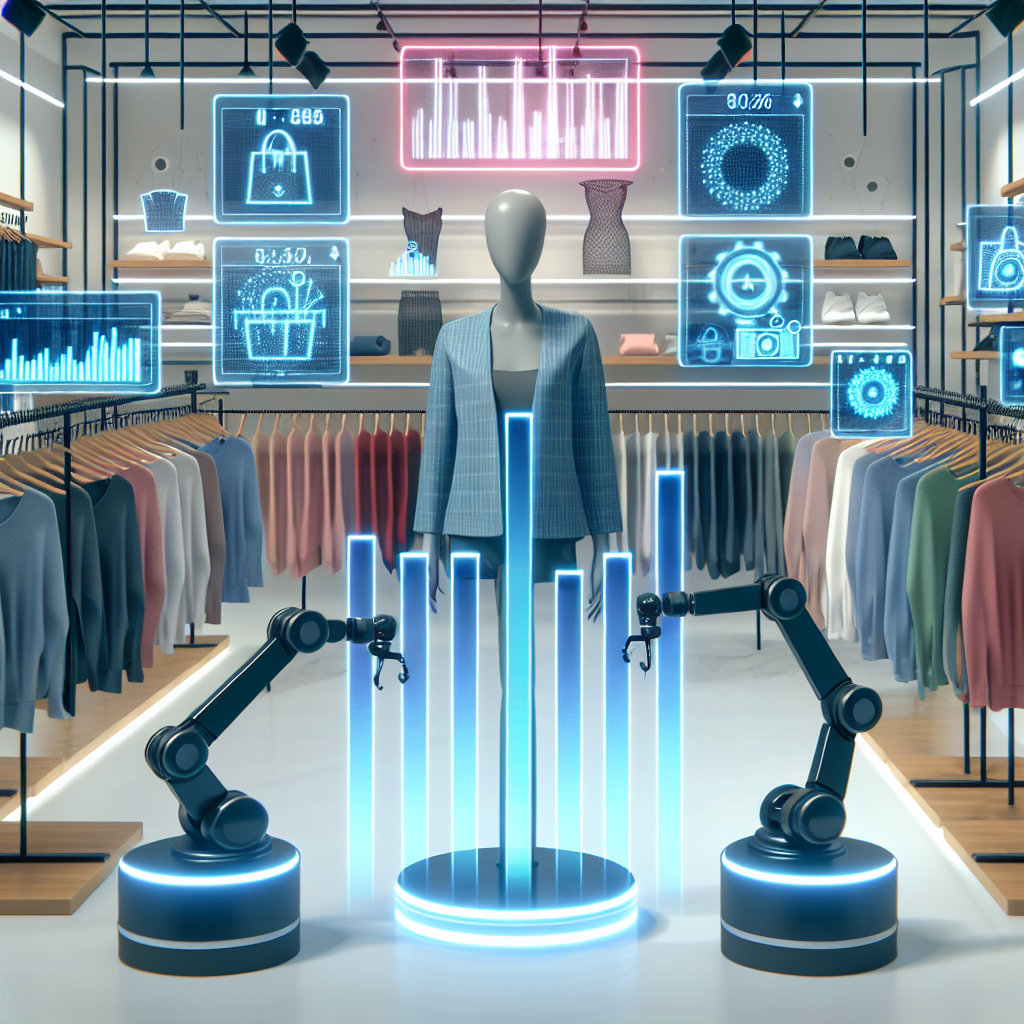The Impact of AI on Fashion Retail Sales
Artificial Intelligence (AI) is revolutionizing the fashion industry, particularly in the realm of retail sales. From virtual try-on tools to personalized product recommendations, AI is transforming the way consumers shop and interact with brands. In this article, we will explore the various ways in which AI is impacting fashion retail sales, and the potential benefits and challenges that come with it.
1. Personalized Product Recommendations
One of the key ways in which AI is transforming fashion retail sales is through personalized product recommendations. AI algorithms analyze customer data, such as past purchases, browsing history, and demographic information, to create personalized recommendations for each individual shopper. This not only helps customers discover new products that match their preferences, but also increases the likelihood of making a purchase.
By providing personalized recommendations, retailers can improve customer satisfaction and loyalty, as well as increase sales and revenue. According to a study by McKinsey, companies that personalize customer experiences can see a 5-15% increase in revenue and a 10-30% increase in marketing efficiency.
2. Virtual Try-On Tools
Another way in which AI is impacting fashion retail sales is through virtual try-on tools. These tools use AI-powered technology, such as augmented reality (AR) and computer vision, to allow customers to virtually try on clothing and accessories before making a purchase. This not only enhances the shopping experience for customers, but also reduces the likelihood of returns and exchanges.
Virtual try-on tools can also help retailers reduce costs associated with physical store space and inventory management. By offering virtual try-on options, retailers can provide a more personalized and engaging shopping experience, leading to increased customer engagement and sales.
3. Inventory Management and Demand Forecasting
AI is also being used to improve inventory management and demand forecasting in fashion retail. AI algorithms can analyze historical sales data, market trends, and other factors to predict future demand and optimize inventory levels. This helps retailers reduce excess inventory, minimize stockouts, and improve overall profitability.
By using AI for inventory management and demand forecasting, retailers can improve operational efficiency, reduce costs, and increase sales. According to a report by IBM, retailers that use AI for demand forecasting can see a 10-20% improvement in forecast accuracy, leading to a 2-5% increase in sales.
4. Chatbots and Virtual Assistants
AI-powered chatbots and virtual assistants are also transforming the way customers interact with fashion retailers. These tools can provide personalized recommendations, answer customer queries, and assist with the shopping process, all in real-time. This not only improves customer service and satisfaction, but also increases sales and conversion rates.
Chatbots and virtual assistants can also help retailers collect valuable customer data and insights, which can be used to further personalize the shopping experience and drive sales. By leveraging AI-powered tools for customer service and support, retailers can enhance the overall shopping experience and build stronger relationships with customers.
5. Challenges and Considerations
While AI offers numerous benefits for fashion retail sales, there are also some challenges and considerations to keep in mind. One of the main challenges is the need for high-quality data to train AI algorithms effectively. Retailers must ensure that they have accurate and relevant data to fuel their AI initiatives and achieve meaningful results.
Another challenge is the potential for bias in AI algorithms, particularly in the realm of personalized recommendations. Retailers must be mindful of the ethical implications of AI and take steps to mitigate bias and ensure fairness in their algorithms. This may involve implementing transparency and accountability measures, as well as regularly auditing and monitoring AI systems.
Additionally, retailers must consider the cost and complexity of implementing AI-powered solutions. While AI offers significant benefits, it also requires a significant investment in technology infrastructure, talent, and resources. Retailers must carefully assess the potential ROI of AI initiatives and develop a clear strategy for implementation and adoption.
FAQs
Q: How can AI improve the customer shopping experience in fashion retail?
A: AI can improve the customer shopping experience in fashion retail by providing personalized product recommendations, virtual try-on tools, chatbots and virtual assistants, and more. These tools can help customers discover new products, try on clothing virtually, and receive real-time assistance and support, leading to a more engaging and satisfying shopping experience.
Q: What are some potential benefits of using AI for inventory management and demand forecasting in fashion retail?
A: Some potential benefits of using AI for inventory management and demand forecasting in fashion retail include improved forecast accuracy, reduced excess inventory, minimized stockouts, and increased profitability. AI algorithms can analyze historical sales data, market trends, and other factors to predict future demand and optimize inventory levels, leading to more efficient operations and increased sales.
Q: What are some key considerations for retailers looking to implement AI-powered solutions in fashion retail?
A: Some key considerations for retailers looking to implement AI-powered solutions in fashion retail include the need for high-quality data, the potential for bias in AI algorithms, and the cost and complexity of implementation. Retailers must ensure that they have accurate and relevant data to train their AI algorithms effectively, address bias and ethical concerns, and assess the potential ROI of AI initiatives before investing in technology infrastructure and resources.
In conclusion, AI is revolutionizing fashion retail sales in numerous ways, from personalized product recommendations to virtual try-on tools and chatbots. By leveraging AI-powered solutions, retailers can enhance the customer shopping experience, improve inventory management and demand forecasting, and drive sales and revenue. However, retailers must also be mindful of the challenges and considerations associated with AI, such as the need for high-quality data, the potential for bias, and the cost and complexity of implementation. By carefully navigating these challenges and opportunities, retailers can harness the power of AI to stay competitive and drive growth in the dynamic world of fashion retail.

